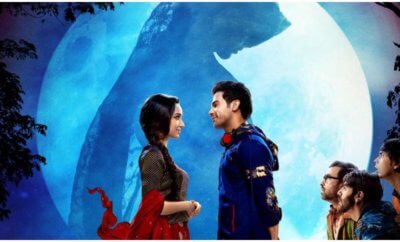Bollywood
Raising Boring

Village Rockstar
Indian independent cinema is gaining respect and is even being endorsed by mainstream production houses.
At the 71st Cannes Film Festival this year, there was a lot of buzz around Indian beauties, such as the now Cannes-fixture Aishwarya Rai and the newly-wed Sonam Kapoor, owning the red carpet as their own. But beyond the billowy gowns and pouty poses, another important moment was taking shape at the prestigious event. For the first time, two Indian women directors were selected for the festival.
Rohena Gera’s Sir, featured at the festival, sensitively depicts the story of a maid thwarted in love by the caste system. Another film by Nandita Das, titled Manto, covers controversial stories from the life of Indian Pakistani writer Saadat Hasan Manto.
Interestingly, this was not the only breaking-grounds-for-Indian-cinema moment at an overseas film festival. Two other Indian films, including Dhanush’s, The Extraordinary Journey of the Fakir and Dinakar Rao’s Asthi, also evoked deep interest not just from the festival going crowds, but also from lovers of popular Indian cinema across the world.
Earlier, at the Indian Film Festival of Los Angeles, Village Rockstars, a story about a young girl from a village in Assam, won the grand jury award for the Best Feature Film. Also in recent years, Indian indie-film Masaan by Neeraj Ghaywan received a standing ovation at Cannes. Irrfan Khan starrer Lunchbox was not only a festival hot property, but raked in huge profits from mainstream cinema goers. Dibakar Banerjee’s Titli wowed various international film festivals, including Gijiomn in Spain. Lipstick Under My Burkha, Miss Lovely, Margarita with a Straw, and I am Kalam are amongst other films that seem to have done the unthinkable for Indian art cinema. These movies have been instrumental not just in terms of putting alternate Indian films on the map of serious, worth-watching global cinema, but have also conflated the boundaries between art-house cinema and commercial pot-boilers.
For a long time in India, art cinema was associated with boring Smita Patil type of movies for the uninitiated. While brilliant stories were written and told, sadly, the masses were tuned only to big stars and bigger make-believe stories from Bollywood. In the past two years, however, there is a landmark shift in independent cinema in India. The genre is gaining respect and is even being endorsed by mainstream production houses.
Several forces seem to be converging for the benefit of independent producers. The nod from the West has helped, as has the pressure faced by big budget Bollywood studios to discover newer plots and perspectives, thus broadening the definition of a successful Indian movie. Digitalization has also made it possible for many talented storytellers to present their production on new platforms.
Many independent filmmakers are heartened by the new opportunities opened up to them. Rima Das, who won this years’ National Award for her film Village Rockstars, credits the new-found respect for indie-cinema to the digital revolution: “I am an ordinary girl from a village near Assam. I come from a family, where we may be in a position to watch films, but never dream about making them. A few years ago, I came from my village to Mumbai to become an actress. It was an impossible dream, but I tried and failed. However, I decided to make movies, because suddenly it was possible to channel your creative energies through mediums available. I made my first movie with a hand camera. But if there was no digital revolution and spaces for people like me to showcase their work, I would never have been an award-winning filmmaker.”

Still from Omerta
Many independent filmmakers believe that mainstream platforms do not offer opportunities for producers with compelling and interesting stories, which the new platforms now do. It is now time, they say, for the mainstream to shift attention.
Art movies becoming the new cool has also to be credited to actors like Nawazuddin Siddiqui, Irrfan Khan, and Rajkummar Rao, who effortlessly dabble between the two genres and make the viewers believe that they are all part of a holistic cinema.
Ajit Pal Singh, whose Gujarati short film Rammat Gammat recently received special mention at the International Children’s Film Competition at the International Short Film Festival in Oberhausen, Germany, says realism has always had a place in popular cinema: “There has been never a dearth of real stories on reel, whether it was the popular Mother India or critically-acclaimed Pather Panchali, some of the best filmmakers in India have made films dealing with the reality.”
So why has parallel cinema traditionally failed to excite audiences? Singh says: “I have always wondered why good cinema in India fails to get the audiences, and I don’t know the answers. What I know is that it is not the fault of the audience; nobody is going to eat a dish that is not being served properly. When every Friday a big budget movie is promoted with the PR budget that is 20 times more than the budget of a good indie film, who is going to come and watch an indie film?”

Rima Das
For all the growing interest, it is still too early to announce the drum rolls for Indian indie cinema. A Bollywood movie with the big budget, bigger star cast and predictable story line is still leagues ahead of a tightly scripted alternate movie. Recently, Hansal Mehta’s Omerta, widely appreciated at the Toronto International Film Festival, failed to draw major crowds. A commercial movie, however abysmal, continues to do better than an indie film and even though big production houses are beginning to tinker with indie movies, it will be some time before the sector breaks through.
Rima Das says: “The audiences always want to see good content. I understand that mainstream Bollywood does not want to take risks as a lot of money is involved. Independent filmmakers on the other hand are working on a limited budget and are hence willing to take risks. The fact that it translates into varied cinematic experiences for the audiences is a win for them.”




You must be logged in to post a comment Login